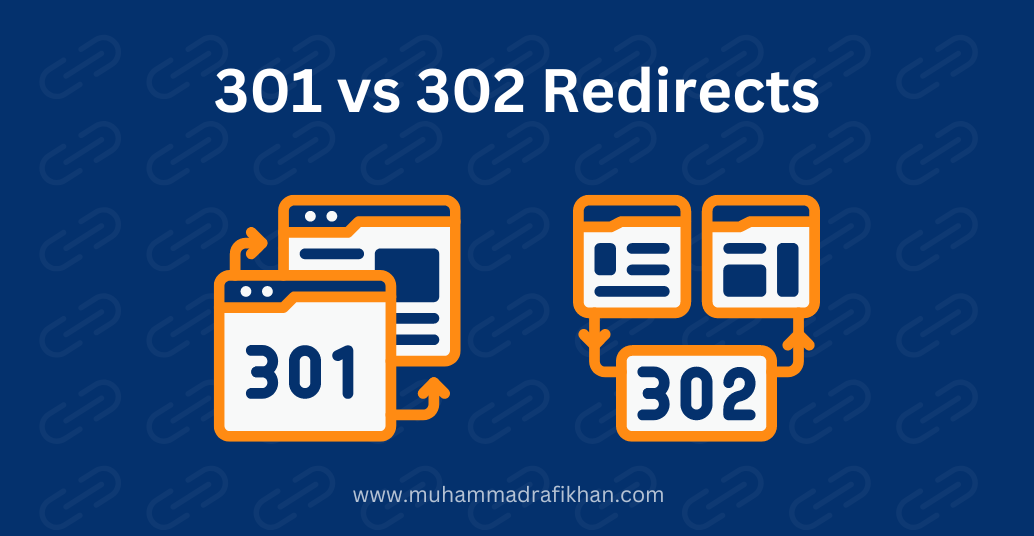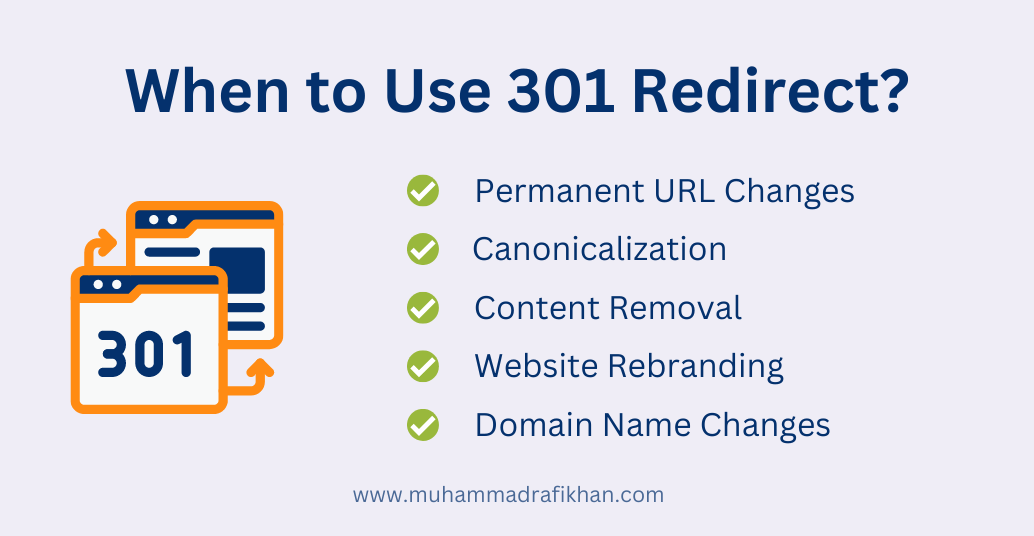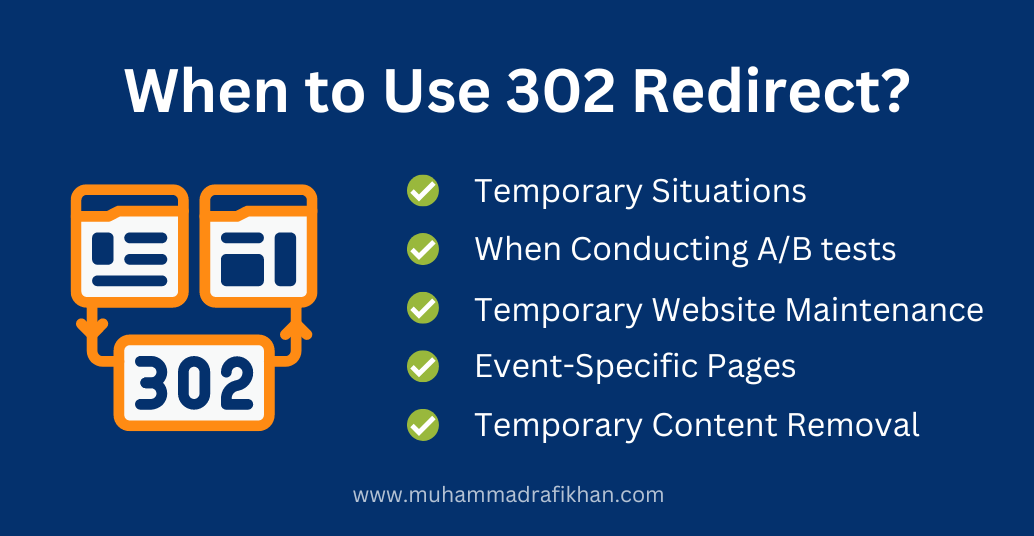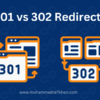
In the vast landscape of website management and search engine optimization (SEO), redirect play a important role in ensuring a smooth user experience and maintaining a healthy online presence. Among the many SEO hot topics, the 301 vs 302 redirect stand out as two of the most common SEO term. These redirect have distinct purposes and can significantly impact your website’s SEO and user engagement.
In this comprehensive guide, we will explore the nuances of 301 and 302 redirect, when to use them, how they affect SEO, how to implement them, and the merits and demerits of each.
What is a Redirect?
A redirect is a web server function that forwards one URL to another. It’s essentially a way to inform both browsers and search engines that a specific web page has been moved or is temporarily unavailable at its original location.
Redirect ensures that users and search engine crawlers are directed to the correct destination, preventing broken links and providing a seamless browsing experience.
What is 301 Redirect
A 301 redirect is a permanent redirection status code. When you implement a 301 redirect, you are telling search engines that the original URL has permanently moved to a new location. As a result, the search engine will transfer the SEO value (such as page authority and link juice) from the old URL to the new one.
What is 302 Redirect
A 302 redirect, on the other hand, is a temporary redirection status code. It indicates that the original URL has temporarily moved to a different location but will eventually return to its original state. Unlike the 301 redirect, a 302 redirect does not transfer SEO value to the new URL.
When to Use 301 Redirect
You should use a 301 redirect in various situations where you want to permanently direct both users and search engines from one URL to another. Here are some common scenarios when a 301 redirect is appropriate:

1. Permanent URL Changes
The most common use case for a 301 redirect is when a webpage’s URL structure changes permanently. This can occur when you redesign your website, change your domain, or reorganize your content.
For example, if your old blog post had the URL “example.com/old-post” and you decide to update it to “example.com/new-post,” you should use a 301 redirect from the old URL to the new one.
2. Canonicalization
To consolidate duplicate or similar content, you can use a 301 redirect. Let’s say you have both “example.com” and “www.example.com” versions of your site. To avoid duplicate content issues and strengthen your SEO, you should choose one version as the canonical (preferred) URL and redirect the other using a 301 redirect.
3. Content Removal
When you delete or remove a page from your website permanently, but you want to redirect users to a relevant, alternative page instead of showing a 404 error.
Example: Redirecting from “/discontinued-product” to “/products” if a product is no longer available.
4. Website Rebranding
During a rebranding process or domain change, you should use 301 redirect to ensure that traffic from the old brand or domain is directed to the new one.
Example: Redirecting from “oldbrand.com” to “newbrand.com” after a company rebrand.
5. Domain Name Changes
If you change your website’s domain name, a 301 redirect is crucial to inform search engines and users about the change and to transfer the SEO value from the old domain to the new one.
Example: Redirecting from “old-domain.com” to “new-domain.com” after a domain name change.
When to Use 302 Redirect
A 302 redirect should be used in specific situations where you want to temporarily redirect users and search engines to a different URL, with the intention of returning to the original URL at some point in the future. Here are common scenarios when you should use a 302 redirect:

I am text block. Click edit button to change this text. Lorem ipsum dolor sit amet, consectetur adipiscing elit. Ut elit tellus, luctus nec ullamcorper mattis, pulvinar dapibus leo.
1. Temporary Situations
Use a 302 redirect when you anticipate a temporary change in your URL structure or content. For instance, if you’re running a limited-time promotion and redirecting users to a special landing page, a 302 redirect is appropriate because you’ll want the original URL to return to its usual state after the promotion ends.
2. A/B Testing
When conducting A/B tests on your website, you might need to temporarily redirect users to different versions of a page. A 302 redirect allows you to do this without affecting your SEO ranking, as it indicates that the change is not permanent.
3. Website Maintenance
When your website is temporarily down for maintenance, you can use a 302 redirect to direct users to a maintenance page or an alternate version of your site. After maintenance is complete, you’ll return to the regular site.
Example: Redirecting from all pages to a “We’ll be back soon” page during server maintenance.
4. Event-Specific Pages
If you create event-specific pages that are only relevant for a short period (e.g., a conference or webinar page), you can use a 302 redirect to guide users to these pages while the event is ongoing. After the event concludes, the redirect can be removed.
Example: Redirecting from “/events/conference-2023” to “/events/conference-2024” during the conference’s duration.
5. Temporary Content Removal
When you temporarily remove a page or a section of your website and plan to reinstate it later. A 302 redirect can help keep users informed and guide them to a relevant page in the meantime.
Example: Redirecting from “/blog/discontinued-topic” to “/blog/popular-topics” while you work on updating the content.
How 301 and 302 Redirect Impact on SEO
301 and 302 redirect have distinct impacts on SEO (Search Engine Optimization) due to their different purposes and implications. Let’s explore how each type of redirect affects SEO:
SEO Impact of 301 Redirect:
301 redirect have a significant impact on SEO, primarily because they transfer the SEO value of the old URL to the new one. Here’s how 301 redirect affect SEO:
1. Page Authority
Search engines consider the page authority or “link juice” of a webpage when determining its ranking. When you use a 301 redirect, the authority of the old URL is passed to the new URL. This helps the new page inherit the ranking power of the old one.
2. User Experience
A seamless user experience is essential for SEO. When users click on a link and are redirected to the correct page, they are less likely to bounce back to the search results. This lowers your bounce rate, indicating to search engines that your content is relevant and engaging.
3. Indexing and Crawl Efficiency
301 redirect guide search engine crawlers to the new URL, ensuring that the updated content is indexed and ranked correctly. This maintains the efficiency of the crawl process and ensures that users find the most relevant information.
4. Preservation of SEO Value
Without a 301 redirect, the old URL could become a broken link or a “404 Not Found” error page. Such issues can negatively impact user experience and SEO. By redirecting users and search engines to the new URL, you ensure that the SEO value built up by the old page is preserved and utilized by the new page.
5. Reduction in Duplicate Content
If you have duplicate or similar content on multiple URLs, it can lead to SEO issues. 301 redirect can be used to consolidate such content, indicating to search engines which version is the preferred or canonical one. This helps prevent duplicate content problems and strengthens your SEO.
6. Preservation of User Trust
When users click on a link and are redirected to the expected content, it builds trust in your website. This trust can lead to increased user engagement, longer time spent on your site, and more return visits—all of which can positively influence SEO.
SEO Impact of 302 Redirect
The SEO impact of 302 redirect is different from that of 301 redirect. A 302 redirect is a temporary redirection status code, and it has unique implications for search engine optimization (SEO). Here’s how 302 redirect affect SEO:
1. No Transfer of Page Authority
Unlike 301 redirect, which indicate a permanent move, 302 redirect signal a temporary redirection. As a result, search engines do not transfer the page authority or “link juice” from the old URL to the new one. This means that the new page does not benefit from the SEO ranking power of the old page.
2. Limited SEO Benefit
Since page authority is not passed with a 302 redirect, the SEO value of the original page remains intact. While this can be advantageous if you intend to return to the original URL, it also means that the new URL may not rank as well as the old one due to the absence of SEO authority.
3. Uncertain Intent
Search engines interpret a 302 redirect as a temporary redirection, but the duration of “temporary” can vary. Search engines may not treat all 302 redirect in the same way, leading to some uncertainty regarding how long the temporary redirection will last and whether the page will eventually revert to its original state. This ambiguity can affect indexing and ranking.
4. User Experience
302 redirect can provide a seamless user experience during temporary changes. Users are redirected to a different URL but expect to return to the original URL eventually. This can be beneficial for maintaining user trust and engagement, which indirectly contributes to SEO by reducing bounce rates and encouraging user interaction.
5. A/B Testing and Temporary Solutions
302 redirect are suitable for scenarios where you need to conduct A/B testing or implement temporary changes for a specific period. After the temporary period ends, you can remove the redirect and return to the original URL.
6. Avoiding Permanent SEO Impact
If you’re unsure about the long-term impact of a URL change or if you want to avoid making a permanent decision regarding a URL alteration, a 302 redirect may be a safer option. It allows you to test the waters without committing to a permanent change.
Conclusion
In conclusion, the choice between a 301 and 302 redirect depends on your specific needs and the nature of the URL change. If you’re making a permanent change, consolidating content, or rebranding, a 301 redirect is your best bet.
However, for temporary situations like promotions or A/B testing, a 302 redirect is the more appropriate choice. Keep in mind that implementing redirect should be done carefully to avoid unintended consequences, and always monitor the impact on your SEO performance to make necessary adjustments.
FAQs about 301 vs 302 Redirect
What is the main difference between a 301 and a 302 redirect?
The primary difference lies in their intent and permanence. A 301 redirect is used for permanent changes, indicating that the original URL has permanently moved to a new location. A 302 redirect, on the other hand, is temporary, suggesting that the original URL will return to its original state at some point.
When should I use a 301 redirect?
Use a 301 redirect when making permanent changes to your website, such as updating URLs, changing domain names, or consolidating content. It’s also ideal for canonicalization and avoiding broken links.
When is a 302 redirect appropriate?
A 302 redirect is suitable for temporary situations, like short-term promotions, A/B testing, maintenance periods, event-specific pages, or seasonal content changes. It’s used when you plan to revert to the original URL in the future.
Do 301 redirect pass SEO value?
Yes, 301 redirect pass SEO value, including page authority and link equity, from the old URL to the new one. This helps maintain or even improve search engine rankings for the new page.
Can I change a 302 redirect to a 301 redirect later?
Yes, you can change a 302 redirect to a 301 redirect if your intention changes from temporary to permanent. This is common when temporary situations become permanent.





![DoFollow vs. NoFollow Links: Simple & Easy Guide [2023]](https://muhammadrafikhan.com/wp-content/uploads/2023/09/DoFollow-vs.-NoFollow-Links-Simple-Easy-Guide-2023-100x100.png)

